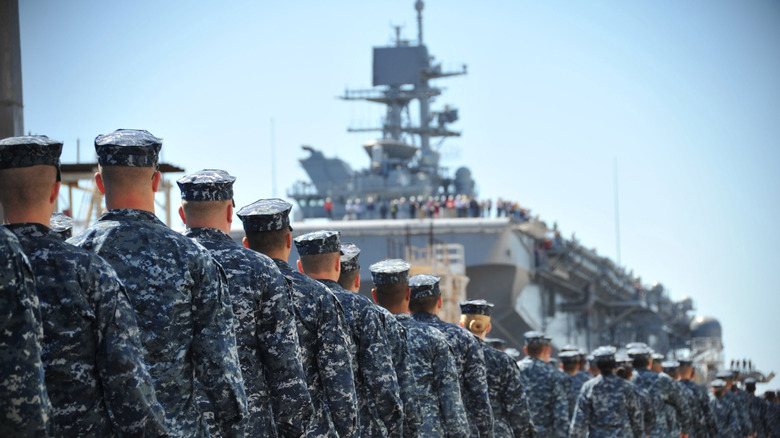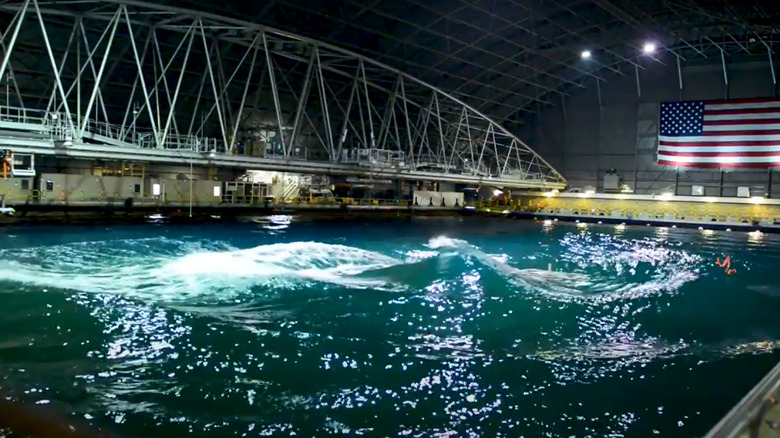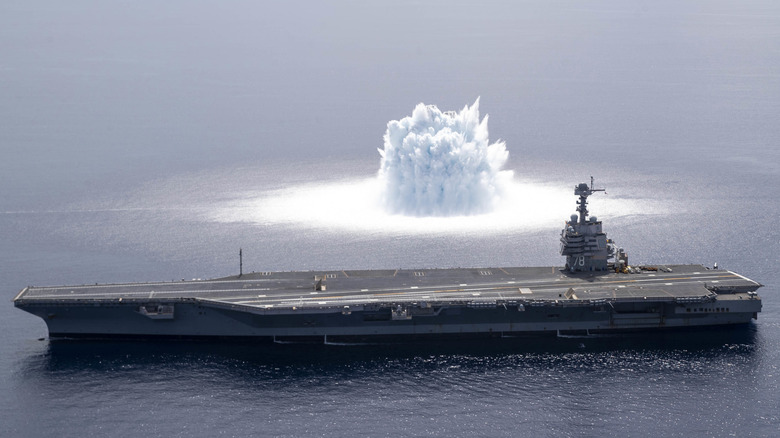How Does The US Navy Test Its Ships For Seaworthiness?
Naval warships must undergo a complex, intensive process before they make it to sea. It's a deeply regimented system filled with certifications, checklists, and tests, all conducted before a ship enters anything resembling a sea trial. The Navy's reliance on private shipbuilders necessitates that design, implementation, execution, and testing meet a unified standard of excellence to ensure vessels' quality and safety.
The presence of high-energy explosives and weaponry on naval vessels makes this even more critical, drastically escalating the safety risks. With some of the worst non-combat accidents in U.S. Navy history resulting from technical and weapon malfunctions, naval personnel must do everything possible to ensure their ships are safe before heading to sea.
For casual observers, this process may conjure images of sea trials, where the Navy puts its newest vessel through a series of maneuvers and combat scenarios. But before any combat testing or sea trials, contractors must work through a seven-stage process that checks the reliability of everything from the ship's electronics to its navigation system. This is what it means when naval personnel talk about seaworthiness, referring to whether a ship has passed all the necessary tests to determine if it is ready for the ocean.
Heading to the pool
One of the most important steps occurs before the ship is built, at the Navy's Maneuvering and Seakeeping Basin in Carderock, Maryland. Here, the Navy tests scale models of its latest designs (up to 30 feet long) in an extremely high-tech wave pool – a 12-million-gallon tank capable of simulating nearly any oceanic condition through 216 electronically powered paddles lining its 360-by-240-foot border. Operators can control each paddle, adjusting its angle, speed, tempo, and motion through 3D models that re-create specific sea conditions. Sensors on the paddles and pool walls track and record the tank's hydraulic pressure, which is then fed to an algorithm that uses it to simulate everything from whirlpools and large waves to shoreline conditions.
This level of detail goes beyond merely testing wave frequency and size; it lets the Navy simulate specific waterways. "We can actually do the kind of seas they can expect in the North Atlantic, the South Pacific, littoral areas, that sort of thing," Jon Etxegoien, head of the Naval Architecture and Engineering Department, told the Navy's magazine All Hands.
Another major advantage is that testing can begin before the ship is even constructed. By testing scaled models of a ship's design, the Navy can identify a ship's weaknesses throughout the design process, saving countless hours and resources. So no matter which type of modern warship the Navy is designing, one of the most important steps will be taking it to the Maryland tank for testing.
Passing the test
Before a ship is declared seaworthy, it must pass a stringent list of qualifications, including dock trials, combat system rehearsals, and fast cruise tests. These requirements fluctuate based on the ship type, particularly submarines and nuclear-powered surface vessels. The vessel then must undergo a series of builder-run tests, followed by builder-run sea tests to ensure that its equipment and systems are operationally ready for the Navy's own testing. This phase often focuses on the aspects of the ship that cannot be tested dockside, including air search radar, fire control tracking, and sonar.
Once the ship has passed these, the Navy moves on to its Acceptance Trials, which check everything from damage control and combat systems to the ship's engines and electrical networks. Finally, the ship is delivered to the Navy, where it will undergo further post-delivery testing as part of its commissioning and final contract periods.
One interesting test is the full ship shock trial, which measures a ship's ability to continue fighting after an explosion. These trials entail detonating a series of large explosives — up to 40,000 pounds – in the ship's vicinity as it cruises at high speeds, simulating intense battle conditions. Understandably, this type of testing is relatively rare. For instance, when the USS Gerald R. Ford aircraft carrier went through full shock testing in 2021, it was only the second aircraft carrier to undergo the test since 1987.


